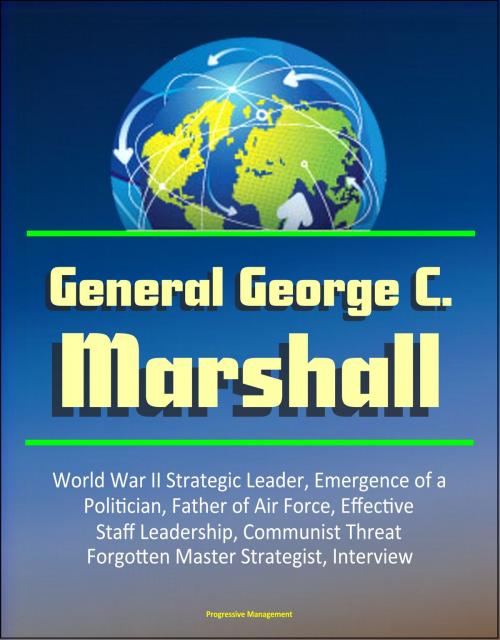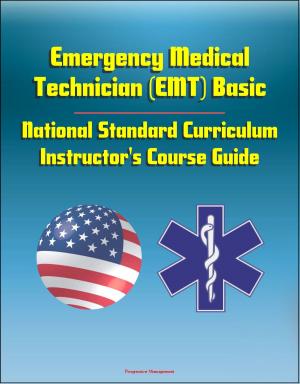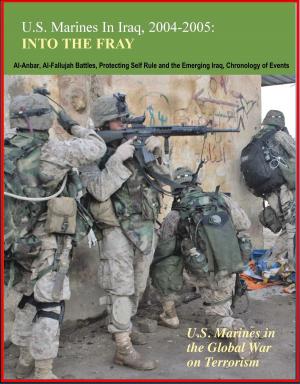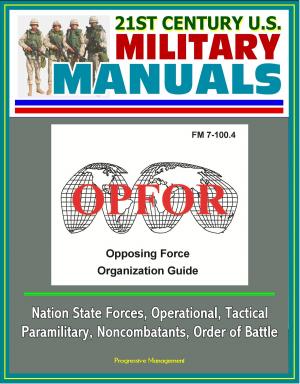General George C. Marshall: World War II Strategic Leader, Emergence of a Politician, Father of Air Force, Effective Staff Leadership, Communist Threat, Forgotten Master Strategist, Interview
Nonfiction, History, Military, Strategy, World War II| Author: | Progressive Management | ISBN: | 9781310019661 |
| Publisher: | Progressive Management | Publication: | April 17, 2015 |
| Imprint: | Smashwords Edition | Language: | English |
| Author: | Progressive Management |
| ISBN: | 9781310019661 |
| Publisher: | Progressive Management |
| Publication: | April 17, 2015 |
| Imprint: | Smashwords Edition |
| Language: | English |
Professionally converted for accurate flowing-text e-book format reproduction, this comprehensive compilation of fourteen important papers and documents provides unique insight into the life and career of one of America's foremost military leaders, General George C. Marshall. Contents: General of the Army George C. Marshall on Operational Leadership * George C. Marshall, Emergence of a Politician * George C. Marshall Strategic Leadership Competencies: Lessons for Today's Strategic Leaders * "A Supreme Act of Faith" George C. Marshall and the Transfer of Munitions to Great Britain, May - June 1940 * George C. Marshall, An Interview With a Strategic Leader * George Catlett Marshall, Father of the United States Air Force: His Contributions to Air Power * General George C. Marshall, Strategic Leadership and Coalition Warfare * General George C. Marshall and the Army Staff: A Study in Effective Staff Leadership * Forging the Instrument: George C. Marshall as a Strategic Leader, 1939-1941 * George C. Marshall: The Forgotten Master Strategist * Marshall's Strategy and the Communist Threat * General George C. Marshall: Strategic Leadership and the Challenges of Reconstituting the Army, 1939-41 * Marshall to Bradley to Sullivan: What Did They See? * George C. Marshall: The Essential Strategic Leader
The Second World War provided a host of challenges for America's strategic leaders. It can be argued that their most critical challenge was choosing the right operational artists and theater-strategists for the Allied cause. Strategic leaders needed the right operational artists to lead forces in a global, combined, joint fight that spanned four theaters of war and fifteen theaters of operations. Of the national-strategic leaders involved in the selection of theater and operational commanders, General of the Army George C. Marshall stands out. Global war dwarfed military endeavors of the past, requiring an unprecedented number of theater strategists and operational artists. The United States had no formal method to pick these leaders, relying on the professional judgment of men like General Marshall. To fulfill this role he followed the guidance and example of his predecessors; he relied on his experience, preference, and education to select the right operational leaders, then supported them fully. Operational artists and theater-strategists, like Dwight D. Eisenhower, were chosen because they possessed traits Marshall valued, and those traits remain relevant for study and application today.
These first two years of General Marshall's tenure as Chief of Staff were critical in rebuilding and modernizing the Army and the Nation's defense establishment prior to the start of World War II During this period General Marshall's primary efforts centered on securing appropriations for equipment, personnel, and training. These efforts were political in nature, because they involved close association with the Executive and Legislative Branches of government. This report depicts how General Marshall's early career prepared him for the Capital's political environment. It capitalizes on three distinct legislative acts to illustrate the growth of General Marshall's political skill and influence during the period: The Burke-Wadsworth Act of 1940; the Land-Lease Act of 1941; and the 1941 legislation which extended the Burke-Wadsworth Act. Finally, the study develops the premise that General Marshall by the start of World War II had mastered the politician's craft and used that capacity to enact legislation which accommodated the Army's transformation from poorly prepared peacetime organization to wartime goliath.
A visionary military and civilian leader, General George C. Marshall was an innovative strategic leader. The use of his well-developed strategic leader competencies to influence key stakeholders through a detailed strategic communications plan and his ability to build consensus while synchronizing interagency capabilities are vital lessons.
Professionally converted for accurate flowing-text e-book format reproduction, this comprehensive compilation of fourteen important papers and documents provides unique insight into the life and career of one of America's foremost military leaders, General George C. Marshall. Contents: General of the Army George C. Marshall on Operational Leadership * George C. Marshall, Emergence of a Politician * George C. Marshall Strategic Leadership Competencies: Lessons for Today's Strategic Leaders * "A Supreme Act of Faith" George C. Marshall and the Transfer of Munitions to Great Britain, May - June 1940 * George C. Marshall, An Interview With a Strategic Leader * George Catlett Marshall, Father of the United States Air Force: His Contributions to Air Power * General George C. Marshall, Strategic Leadership and Coalition Warfare * General George C. Marshall and the Army Staff: A Study in Effective Staff Leadership * Forging the Instrument: George C. Marshall as a Strategic Leader, 1939-1941 * George C. Marshall: The Forgotten Master Strategist * Marshall's Strategy and the Communist Threat * General George C. Marshall: Strategic Leadership and the Challenges of Reconstituting the Army, 1939-41 * Marshall to Bradley to Sullivan: What Did They See? * George C. Marshall: The Essential Strategic Leader
The Second World War provided a host of challenges for America's strategic leaders. It can be argued that their most critical challenge was choosing the right operational artists and theater-strategists for the Allied cause. Strategic leaders needed the right operational artists to lead forces in a global, combined, joint fight that spanned four theaters of war and fifteen theaters of operations. Of the national-strategic leaders involved in the selection of theater and operational commanders, General of the Army George C. Marshall stands out. Global war dwarfed military endeavors of the past, requiring an unprecedented number of theater strategists and operational artists. The United States had no formal method to pick these leaders, relying on the professional judgment of men like General Marshall. To fulfill this role he followed the guidance and example of his predecessors; he relied on his experience, preference, and education to select the right operational leaders, then supported them fully. Operational artists and theater-strategists, like Dwight D. Eisenhower, were chosen because they possessed traits Marshall valued, and those traits remain relevant for study and application today.
These first two years of General Marshall's tenure as Chief of Staff were critical in rebuilding and modernizing the Army and the Nation's defense establishment prior to the start of World War II During this period General Marshall's primary efforts centered on securing appropriations for equipment, personnel, and training. These efforts were political in nature, because they involved close association with the Executive and Legislative Branches of government. This report depicts how General Marshall's early career prepared him for the Capital's political environment. It capitalizes on three distinct legislative acts to illustrate the growth of General Marshall's political skill and influence during the period: The Burke-Wadsworth Act of 1940; the Land-Lease Act of 1941; and the 1941 legislation which extended the Burke-Wadsworth Act. Finally, the study develops the premise that General Marshall by the start of World War II had mastered the politician's craft and used that capacity to enact legislation which accommodated the Army's transformation from poorly prepared peacetime organization to wartime goliath.
A visionary military and civilian leader, General George C. Marshall was an innovative strategic leader. The use of his well-developed strategic leader competencies to influence key stakeholders through a detailed strategic communications plan and his ability to build consensus while synchronizing interagency capabilities are vital lessons.















